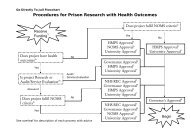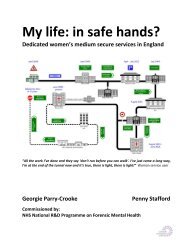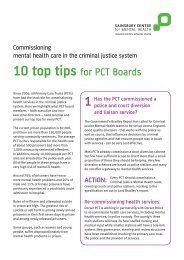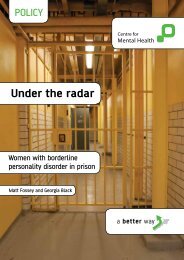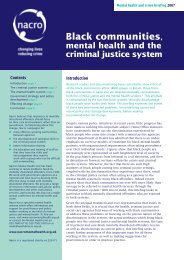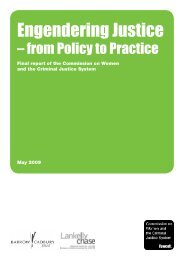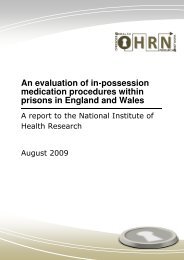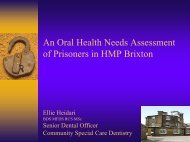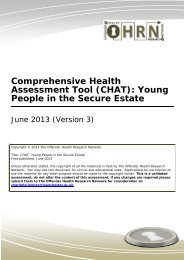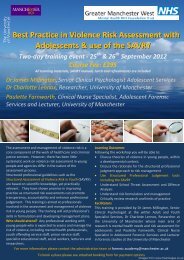Physical Control in Care Training Manual - Independent Advisory ...
Physical Control in Care Training Manual - Independent Advisory ...
Physical Control in Care Training Manual - Independent Advisory ...
Create successful ePaper yourself
Turn your PDF publications into a flip-book with our unique Google optimized e-Paper software.
PHYSICAL CONTROL IN CARE• Free movement of the ribs• Free movement of the diaphragmCompromise of any one, or more, of these will restrict or preventbreath<strong>in</strong>g.At rest, only m<strong>in</strong>imal movement is required, and this is largelyachieved by the diaphragm and the <strong>in</strong>ter-costal muscles between theribs. Follow<strong>in</strong>g exertion, or when an <strong>in</strong>dividual is upset or anxious, thedemands of the body <strong>in</strong>crease greatly. Due to <strong>in</strong>creased carbondioxide <strong>in</strong> the blood, the rate and depth of breath<strong>in</strong>g <strong>in</strong>creases. Thiswill require the movement of both the rib cage and the diaphragm toallow <strong>in</strong>creased lung <strong>in</strong>flation. Failure to supply the body with theadditional demand for breath<strong>in</strong>g (particularly dur<strong>in</strong>g or follow<strong>in</strong>g thestress of a physical struggle) is potentially dangerous and may lead todeath with<strong>in</strong> a few m<strong>in</strong>utes.Restra<strong>in</strong>t AsphyxiaAny restra<strong>in</strong>t technique that compromises the airway or expansion ofthe lungs may seriously impair a young person’s ability to breath, andcan lead to asphyxiation. This <strong>in</strong>cludes cover<strong>in</strong>g the mouth and/ornose, pressure to the neck region, restriction of the chest wall andrestriction of the diaphragm, which may be caused by the abdomenbecom<strong>in</strong>g compressed <strong>in</strong> seated, kneel<strong>in</strong>g or prone (face down)restra<strong>in</strong>t positions 4 .There is a common misconception that if an <strong>in</strong>dividual can talk, theyare able to breath. This is not the case. Only a small amount of air isrequired to generate speech <strong>in</strong> the voice box, a much larger volume isrequired to ma<strong>in</strong>ta<strong>in</strong> adequate oxygen levels around the body,particularly over the course of several m<strong>in</strong>utes of struggle dur<strong>in</strong>g aresisted restra<strong>in</strong>t. A person dy<strong>in</strong>g from restra<strong>in</strong>t asphyxia may well beable to speak before collapse.A degree of asphyxia can result from any restra<strong>in</strong>t position <strong>in</strong> whichthere is restriction of the airway, chest or diaphragm, particularly <strong>in</strong>those where the head is forced downward towards the knees.4 Parkes, J. (2002) ‘A Review Of The Literature On Positional Asphyxia As A Possible Cause OfSudden Death Dur<strong>in</strong>g Restra<strong>in</strong>t.’ British Journal Of Forensic Practice. 4(1) 24-30© National Offender Management Service National Tactical Response GroupJuly 201031



